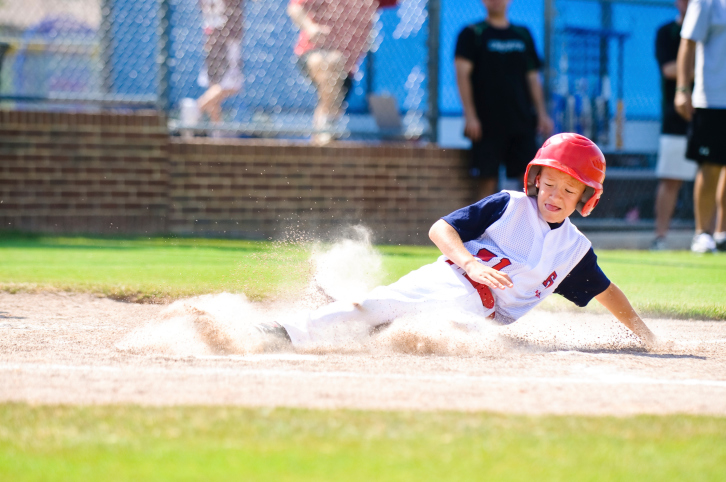
Sliding is an important skill to learn in baseball, but it requires a lot of practice and focus on technique in order to master the skill and prevent injury.
Using a slide allows a runner to get to the base quickly without having to slow down. It also eliminates the chance of overrunning the base. Sliding can help a player avoid a tag and break up a double play.
"Sliding is a difficult skill for some youth players to master due to the possibility of injury if it is not done correctly," says Larry Miljas, a youth and high school baseball coach from Pine Valley, California who runs The Youth Baseball Coach website. "It's an extremely important skill to have for a baseball player and should be taught and drilled during practice."
Miljas recommends static slide practice for younger players in order to learn muscle memory, proper form and technique.
More: How to Run an Efficient Baseball Practice
Once players understand the proper mechanics and positioning, coaches can incorporate different sliding drills during practice.
A slip 'n slide or a flat piece of cardboard can be used for sliding practice, as both provide a softer, safe surface for sliding repetitions.
More: Drill of the Week: Baseball Fly Ball Drill for Kids
To emphasize players keeping their hands up during a slide, coaches or parent volunteers can toss a tennis ball to the players as they get to the end of their slide. Have players start out at half-speed and then progress to game-speed sliding.
"Sliding is a controlled, aggressive action where players sit into the slide by running then aggressively pushing off with their foot on the leg that will be bent during the slide," Miljas says. "Teach them to avoid jumping up and into the slide. They should be pushing forward and sitting into the slide."
Once you feel confident that your team understands how to slide safely, you can practice game situations and incorporate sliding with base running practice.
When players have mastered the basics they are ready to learn how to execute the different types of slides.
There are three types of slides in baseball:
A base runner will end up in a standing position after the pop-up slide, allowing him to use his momentum to continue running in the event of an error or overthrow.
The player starts his slide closer to the base and rather than leaning back, will keep his torso in an upright position. This lowers the base runner's center of gravity.
The runner will brace his straight leg against the base and this, along with his torso positioning, will allow him to pop up to a standing position.
More: Which Sports Camp Is Right For You?
Check the Rules: Note that some youth baseball leagues do not allow the head-first slide. Make sure to review the rules for your team or league.
More: 4 Biggest Mistakes Baseball Teams Make in Practice
More experienced players will know when they should slide to avoid being tagged or break up a double play, but there are also ways for coaches to communicate to their players that they should slide.
"Our team uses a loud 'Get Down,' which is accompanied by the coach pushing the palms of both hands rapidly down towards the ground," Miljas says. "Players are also instructed to slide whenever they see an opposing player try to tag them or set up for a tag, or when they are approaching a base too quickly. This helps them stop before their momentum takes them off the base."
The third base coach can use hand signals and verbal cues to help a player running to second base, since the throw can often be coming from behind the runner.
Coaches should help their young players learn to slide safely, and develop a system to communicate the best time to slide in game situations.
Scottish Golf- An Unassailable Charm of Scotland


Pike Fishing Tackle- So What Will You Need?

Copyright © www.mycheapnfljerseys.com Outdoor sports All Rights Reserved